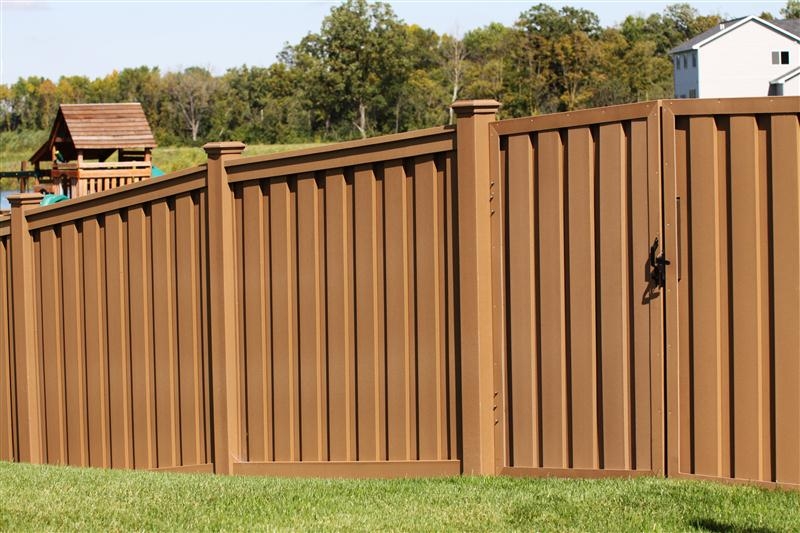In our last post we discussed the evolution of PVC vinyl fencing with the addition of simulated wood grain and sturdier PVC fence posts.
 In this post we will examine new composite plastic material used in Trex fencing.
In this post we will examine new composite plastic material used in Trex fencing.
Composite fencing material is created combining wood fibers — reclaimed from manufacturers and sawdust — and plastic in a proprietary process to create custom shaped pieces for each fence design.
The unique material is resistant to water, rot., heat, cold and insects. It is dense, making it strong, tested to sustain steady 110 mph winds and gusts up to 130 mph.
Color is typically added as part of the manufacturing process not added as an acrylic finish after the material is extruded. This means the color will last longer and suffer less wear. IN fact, the material is over pigmented so it will fade to its intended color.
The fencing materials come with a 25-year warranty and because the plastic components are typically made from recycled material the fencing qualifies as ‘green’ by many sustainable building standards such as LEED.
Trex composite fencing is also very easy to install, with the prefabricated pieces designed to easily fit together. The interlocking nature of the panels adds to the strength of the Trex Composite fencing beyond the material itself, as does the aluminum reinforced rails.
The prefabricated panels look the same on both sides, making them “neighbor-friendly,” meaning the fence looks the same on both sides.
In our next post we will examine the differences between PVC (vinyl) and composite fencing.
